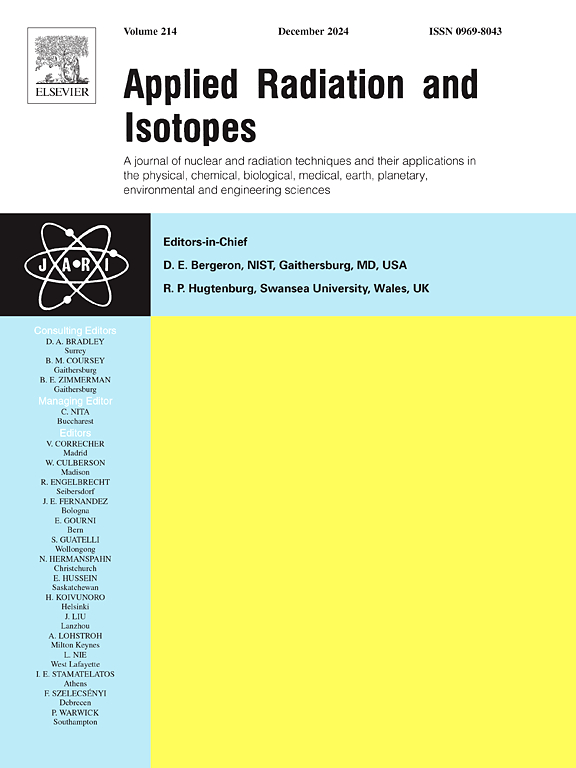Radioactivity and radon exhalation rate of some granite building materials in Türkiye
IF 1.8
3区 工程技术
Q3 CHEMISTRY, INORGANIC & NUCLEAR
引用次数: 0
Abstract
The presence of elevated concentrations of naturally occurring radionuclides in building materials can lead to the generation of high dose rates within indoor environments, resulting from both internal and external exposure pathways. The internal dose is mainly attributable to radon exhalation from the building materials, whereas the external dose is a consequence of γ-rays emitted from the radionuclides present within the building materials. The principal radioisotopes of interest are potassium (K), thorium (Th) and radium (Ra), in terms of their respective concentrations in the material. The concentration of Ra in the material is also a significant factor in determining the quantity of radioactive radon gas that is released from the material. In the study conducted by Çetin in 2011, the concentration of radionuclides present in selected granite materials used in construction in Türkiye was determined using the gamma spectrometry analysis method. Radionuclide concentrations were used to calculate the annual effective dose values for eight of these materials. The radon exhalation rate is directly affected by the radium concentration in the material. This reports gives natural radioactivity content and radon exhalation rate measurements for some granite building materials using in Türkiye.
某些花岗岩建筑材料的放射性和氡释放率
建筑材料中天然存在的放射性核素浓度升高可导致室内环境中由于内部和外部照射途径而产生高剂量率。内部剂量主要是由于建筑材料散发出的氡,而外部剂量则是由于建筑材料内存在的放射性核素发出的γ射线造成的。我们感兴趣的主要放射性同位素是钾(K)、钍(Th)和镭(Ra),按它们各自在材料中的浓度计算。材料中Ra的浓度也是决定从材料中释放的放射性氡气数量的一个重要因素。在Çetin于2011年进行的研究中,使用伽马能谱分析方法测定了基耶岛建筑中选用的花岗岩材料中存在的放射性核素浓度。放射性核素浓度被用来计算其中8种物质的年有效剂量值。材料中镭的浓度直接影响氡的析出率。本报告给出了一些花岗岩建筑材料的天然放射性含量和氡释放率的测量结果。
本文章由计算机程序翻译,如有差异,请以英文原文为准。
求助全文
约1分钟内获得全文
求助全文
来源期刊

Applied Radiation and Isotopes
工程技术-核科学技术
CiteScore
3.00
自引率
12.50%
发文量
406
审稿时长
13.5 months
期刊介绍:
Applied Radiation and Isotopes provides a high quality medium for the publication of substantial, original and scientific and technological papers on the development and peaceful application of nuclear, radiation and radionuclide techniques in chemistry, physics, biochemistry, biology, medicine, security, engineering and in the earth, planetary and environmental sciences, all including dosimetry. Nuclear techniques are defined in the broadest sense and both experimental and theoretical papers are welcome. They include the development and use of α- and β-particles, X-rays and γ-rays, neutrons and other nuclear particles and radiations from all sources, including radionuclides, synchrotron sources, cyclotrons and reactors and from the natural environment.
The journal aims to publish papers with significance to an international audience, containing substantial novelty and scientific impact. The Editors reserve the rights to reject, with or without external review, papers that do not meet these criteria.
Papers dealing with radiation processing, i.e., where radiation is used to bring about a biological, chemical or physical change in a material, should be directed to our sister journal Radiation Physics and Chemistry.
 求助内容:
求助内容: 应助结果提醒方式:
应助结果提醒方式:


